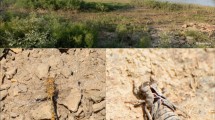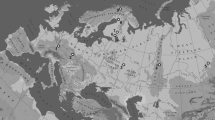Abstract—The annual cycles of pipits and wagtails, which were studied during field and experimental observations in the Lower Ob River basin and Yamal Peninsula, have many common features. All species are similar in dates of arrival, nesting, molting, and departure onset; however, the timing of postnuptial migration and prenuptial molting differ somewhat. Positive air temperatures are an environmental factor that determines the beginning of arrival to the forest tundra and tundras. Only yellow wagtails arrive with developed gonads, while the other species require additional stimulation by a photoperiod of 24L : 0D. The reduction of some nesting stages is presumably an attempt of boreal populations to increase reproductive success. Differences in the annual cycle program are observed during the postnesting period. These variations include the timing of the onset and duration of postjuvenile and postnuptial molting, as well as the degree of overlap of postnuptial molting with nesting, the degree of overlap of the migration state with molting, photoperiodic molting conditions, and autumn migration. The intraspecific rhythm of migration in combination with environmental conditions along the migration track determines the timing of arrival to wintering sites. The threshold values of photoperiodic intervals of wintering and prenuptial molting in different species correspond to the latitude of hibernation and, possibly, determine this latitude.

Similar content being viewed by others
REFERENCES
Berthold, P., The endogenous control of bird migration: a survey of experimental evidence, Bird Study, 1984, vol. 31, no. 1, pp. 19–27.
Danilov, N.N., Molt of some birds in the conditions of the Polar Urals, in Materialy po faune Priobskogo Severa i ee ispol’zovaniyu (Materials on the Fauna of the Ob North and Its Use), Tyumen, 1959, pp. 390–392.
Dol’nik, V.R., Migratsionnoe sostoyanie ptits (Migration Status of Birds), Moscow: Nauka, 1975.
Gladkov, N.A., Tryasoguzkovye. Ptitsy Sovetskogo Soyuza (Motacillidae. Birds of the Soviet Union), Moscow: Sovetskaya Nauka, 1954, vol. 5, рр. 594–690.
Gwinner, E., Circannuale Periodic als Grundlage des jahreszeitlichen Funktionswandels bei Zugvogeln. Untersuchungen am Fitis (Phylloscopus trochilus) und Waldlaubsanger (Ph. sibilatrix), Journal fur Ornihologie, 1968, vol. 109, pp. 70–95.
Gwinner, E., Endogenous timing factors in bird migration, in Animal Orientation and Navigation, Washington, DC: NASA, 1972, pp. 321–328.
Korovin, V.A., Ptitsy v agrolandshaftakh Urala (Birds in the Agricultural Landscapes of the Urals), Yekaterinburg: Ural. Univ., 2004.
Kukish, I.I. and Noskov, G.A., Photoperiodic regulation of prenuptial moult of the western yellow wagtail (Motacilla f. flava L.), Nauchn. Dokl. Vyssh. Shkoly, Biol. Nauki, 1975, no. 8, pp. 11–15.
Noskov, G.A., Patterns of adaptive changes in the annual cycle of birds, Extended Abstract, Doctoral (Biol.) Dissertation, Leningrad, 1989.
Noskov, G.A. and Rymkevich, T.A., Method of study of intraspecific variations in molt of birds, in Metodika issledovaniya produktivnosti i struktury vidov v predelakh ikh arealov (Method of Study of Productivity and Structure of Species Within Their Ranges), Vilnus, 1977, part 1, pp. 37–48.
Noskov, G.A. and Rymkevich, T.V., Patterns of adaptive changes in the annual cycle of birds, Dokl. Akad. Nauk SSSR, 1988, vol. 301, no. 2, pp. 505–508.
Noskov, G.A. and Rymkevich, T.A., Regulation of the annual cycle parameters and its role in the microevolution process in birds, Usp. Sovrem. Biol., 2010, vol. 130, no. 4, pp. 346–359.
Paskhal’nyi, S.P., Arrival timing of some species of birds in the lower reaches of the Ob River in 1970, in Mnogoletnyaya dinamika chislennosti ptits i mlekopitayushchikh v svyazi s global’nym izmeneniem klimata. Materialy mezhdunarodnogo simpoziuma (11–16 noyabrya 2002, Rossiya, Respublika Tatarstan, Kazan’) (Proc. Int. Symp. “The Long-Term Dynamics of Abundance of Birds and Mammals Due to Global Climate Change,” November 11–16, 2002, Kazan, Republic of Tatarstan, Russia), Kazan: ZAO Novoe znanie, 2002, pp. 151–156.
Rymkevich, T.A., Photoperiodic regulation of molt of ortolan bunting (Emberiza hortulana) from Leningrad oblast, Vestn. Leningr. Univ., 1976, no. 15, pp. 19–25.
Ryzhanovskii, V.N., Ecology of meadow and red-throated pipits on the Yamal Peninsula, in Sravnitel’naya ekologiya fonovykh ptits Yamal’skoi tundry (Comparative Ecology of Common Birds of the Yamal Tundra), Sverdlovsk, 1977, pp. 3–25.
Ryzhanovskii, V.N., Relationship of postnuptial molt with breeding and migration of passerines of the Subarctic, Ekologiya, 1987, no. 3, pp. 31–36.
Ryzhanovskii, V.N., Ekologiya poslegnezdovogo perioda zhizni vorob’inykh ptits Subarktiki (Ecology of the Postbreeding Period of Life of Passerines of the Subarctic), Yekaterinburg: Ural. Univ., 1997.
Ryzhanovskii, V.N., Evidence for the existence of a high-altitude white wagtail (Motacilla alba) population in the Yamal Peninsula and the boundaries of its distribution, Russ. J. Ecol., 2006, vol. 37, no. 2, pp. 120–125.
Ryzhanovskii, V.N., The role of photoperiodic conditions in the life of high latitude passerines, Zool. Zh., 2008, vol. 87, no. 6, pp. 732–747.
Ryzhanovskii, V.N., The phenomenon of spatial distribution of the citrine wagtail (Motacilla citreola) in the north of Western Siberia and its ecological interpretation, Russ. J. Ecol., 2012, vol. 43, no. 2, pp. 148–154.
Ryzhanovskii, V.N., Ecology of yellow wagtail Motacilla flava L. in the forest tundra of Western Siberia and the factors limiting the expansion of its range northwards, Sib. Ekol. Zh., 2013, no. 3, pp. 391–401.
Ryzhanovskii, V.N., Control over the duration of the autumn migratory state and migration distance and possible wintering areas in underyearlings of subarctic passerine birds, Russ. J. Ecol., 2013a, vol. 44, no. 3, pp. 260–263.
Ryzhanovskii, V.N., Photoperiodic conditions during molting of the Indian pied wagtail (Motacilla alba dukhunensis) and location of its winter habitats, Biol. Bull. (Moscow), 2013b, vol. 40, no. 4, pp. 414–418.
Ryzhanovskii, V.N. and Ryabitsev, V.K., The dependence of the arrival and egg laying time in birds of the Yamal Peninsula latitude, in Ekologicheskie i biotsenoticheskie svyazi pereletnykh ptits Zapadnoi Sibiri (Ecological and Biocenotic Relationships of Migratory Birds in Western Siberia), Novosibirsk: Nauka, 1981, pp. 185–192.
Ryzhanovskii, V.N. and Ryabitsev, V.K., Ecology of the meadow pipit Anthus pratensis Linnaeus, 1758 at the northeastern boundary of the breeding range, Sib. Ekol. Zh., 2016, no. 1, pp. 27–35.
Ryzhanovsky, V.N., Latitudinal variation of moult annual cycle in West Siberian White Motacilla alba dukhunensis Sykes.1. Post-juvenile moult, Avian Ecol. Behav., 2010, vol. 18, pp. 3–22.
Ryzhanovsky, V.N., Latitudinal variation of moult annual cycle in West Siberian White Motacilla alba dukhunensis Sykes. 2. Post-nuptiale and pre-nuptiale moult, Avian Ecol. Behav., 2011, vol. 19, pp. 13–31.
Shul’ts, G.E., Obshchaya fenologiya (Total General Phenology), Leningrad: Nauka, 1981.
Stresemann, E. and Stresemann, V., Die Mauser der Vogel, Journal fur Ornihologie. Sonderheft, 1966.
Wolfson, A., Light and endocrine events in birds: role of the dark period and circadian rhythms in the regulation of the gonadal cycle, Archives d’anatomic microscopique et de morphologie experimentale, 1965, vol. 54, no. 1, pp. 579–600.
ACKNOWLEDGMENTS
The author is grateful to the Director of the Arctic Research Station, Ural Branch, Russian Academy of Sciences, V.G. Shtro, for kindly providing the data on the arrival of birds to the Lower Ob River basin. The author also thanks his colleagues at the laboratory N.S. Alekseeva and V.K. Ryabitsev for providing the data on bird nesting in middle and northern Yamal.
This study was supported by the Presidium of the Ural Branch of the Russian Academy of Sciences, project no. 18-9-4-22.
Author information
Authors and Affiliations
Corresponding author
Ethics declarations
Conflict of interests. The authors declare that they have no conflict of interest.
Statement on the welfare of animals. All applicable international, national, and/or institutional guidelines for the care and use of animals were followed.
Additional information
Translated by D. Zabolotny
Rights and permissions
About this article
Cite this article
Ryzhanovskiy, V.N. Annual Cycles of Wagtails (Passeriformes, Motacillidae) in Northwestern Siberia: Comparative Aspects. Biol Bull Russ Acad Sci 45, 1055–1066 (2018). https://doi.org/10.1134/S1062359018090157
Received:
Published:
Issue Date:
DOI: https://doi.org/10.1134/S1062359018090157




